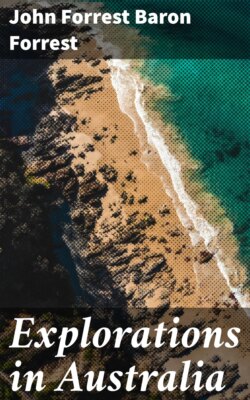Читать книгу Explorations in Australia - Baron John Forrest Forrest - Страница 17
На сайте Литреса книга снята с продажи.
THE FATE OF LEICHARDT.
ОглавлениеFrom that day the fate of Leichardt and his companions has been involved in mystery. He was then on the Cogoon River, in Eastern Australia, at least 1500 miles from the nearest station on the western side of the continent. His last letter gives no clue to the track he intended to pursue. If a westerly course had been struck he would have nearly traversed the route which subsequently Warburton travelled; but no trace of him has ever been discovered. Several expeditions were undertaken to ascertain his fate; at various times expectations were aroused by finding trees marked L; but Leichardt himself, on previous journeys, had met with trees so marked, by whom is unknown. Natives found in the remote interior were questioned; they told vague stories of the murder of white men, but all investigations resulted in the conclusion that the statements were as untrustworthy as those generally made to explorers who question uninformed, ignorant natives. The white man's experience is usually that a native only partially comprehends the question; he does not understand what is wanted, but is anxious to please, as he expects something to eat, and he says what he thinks is most likely to be satisfactory.
Leichardt was certainly ill-provided for an expedition of the magnitude he contemplated, and it appears to be at the least as probable that he succumbed to the hardships he encountered, or was swept away by a flood, as that he was murdered by the blacks. Twenty-seven years have elapsed since he disappeared in the interior; yet the mystery attending his fate has not ceased to excite a desire to know the fate of so daring an explorer, and ascertain something definite respecting his course--a desire which was one of the principal motives that prompted my first expedition into the unknown interior dividing the west from the east.
In 1872, Mr. Giles headed an exploring party from Melbourne, which succeeded in making known a vast district hitherto unexplored; but his progress was stopped, when he had reached longitude 129 degrees 40 minutes, by a large salt lake, the limits of which could not be ascertained. In the following year Mr. Gosse, at the head of a party equipped by the South Australian Government, started from nearly the same point of the telegraph line, and at the same period as the Warburton expedition, but was compelled to return after eight months' absence, having reached longitude 126 degrees 59 minutes. Gosse found the country generally poor and destitute of water. He was perhaps unfortunate in experiencing an unusually dry season; but his deliberate conclusion was, "I do not think a practicable route will ever be found between the lower part of Western Australia and the telegraph line."
